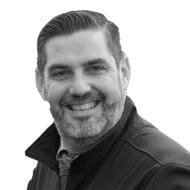Webster Family, Ardhuncart Farm
Year one is complete and we are swinging in to year two with a few changes starting to take effect.
There is always a pinch point in early spring when grass is quite scarce. We are trying to have ewes and lambs out at pasture and start to get cows and calves out as well. To try to preserve more grass this winter, we established a crop of swedes on just 1ha of ground to see how it would work for getting the ewes off the grass for a few weeks. It was done as a bargain basement job, by mixing the seed with a bag of 10:18:28 in the hopper of the one pass and then cultivating directly in to the stubble. The crop took well and while it didn’t yield as high as a full crop of swedes, it kept the sheep long enough to give the grass a bit of a break.
Last year lambing was a real struggle with a lot of prolapses. There is a suggestion that ewe prolapses are driven by a lack of magnesium in the diet. The fields that the ewes were grazing on pre-lambing last year were some of the higher-K index fields on the farm. Using the same logic as grass staggers, that high K compromises magnesium uptake, this year we have grazed the ewes on fields with a lower K index.
So far it looks to have reduced prolapse incidence. Whether this is from the reduced K or as a result of bringing in more Cheviot mules this year and culling any problem ewes, we don’t know.
Benchmark
2017 was a poor year for us, we lost five cows for various reasons, and also we didn’t sell as many heifers with calves at foot as planned therefore sales were reduced. However, these heifers have been retained and will boost the output of our own herd in the coming year.
The sheep have improved, due mainly to the reduced amount of hard feed purchased by feeding to litter size and improved sale prices last year.
Aim for this year
This year, the sheep are going to go on a rotation on a new ley at the eastern edge of the farm. It is quite a steep field and initially, we have it split in four, with gates at either end of each fence to make moving stock easy. We plan to make more, better quality silage and remove any unproductive animals from the system. With the extra heifers coming into our herd we can afford to cull that bit harder this year.
The Gammie Family Drumforber Farm
One year in, there have been many changes on the farm. Making top-quality silage for growing stock was one. 2017 silage has 33% more energy than 2016, meaning we have fed next to no concentrates to the heifer calves that will be returning to grass this year. This was achieved by bringing forward the cutting date to the end of May.
The high-quality silage also meant that we have used ammonia-treated straw for the dry cows. This has worked well for us, utilising some of the condition the cows had built up over the grazing season. We then swapped them onto a diet with straw, silage and draff six weeks or so pre-calving to build up milk and colostrum quality.
Getting cattle out to grass earlier really helped reduce the winter feed bill last year with young stock getting out towards the end of March and cows and calves from mid-April onwards.
We looked at the bedding situation very early in the season and decided to do something about it. We have tray driers that run on wood chip and we dried some more chip down and bedded the cattle with it. This has worked really well, with the cattle remaining clean and dry over winter on one mucking out.
Cost wise, it has come in a good bit cheaper than using straw for bedding but we have yet to see how it behaves when we spread it on the ground. We are using wood chip for all the youngstock and cows with calves at foot. The dry cows were on wood chip but now as they approach calving we have moved them on to straw.
Benchmark
As any newly established business will know, it can take time for the initial investment to pay off. This is something we expected and are prepared to work at over the coming years.
We can be assured that by putting a robust system in place from day one, it will pay off in the long run. Gross margin per cow was £264 for last year. We expect to see this increase significantly throughout the lifetime of the project.
Aim for this year
After the success of last year’s early turnout, we are hoping to be able to do the same again. At the minute, ground conditions don’t look like we will be as early as last year but we are holding out hope that things will dry up soon.
There actually is plenty of grass about as it kept growing into October but unfortunately ground was too wet to get out and graze it. It would be nice to get a quick grazing across all the ground as soon as possible to encourage new growth once temperatures rise.
Cow numbers will continue to expand as we try to get to what we feel comfortable with. I have also recently done an AI course so I will see how that goes on some of the cows and heifers this coming year.






 This is a subscriber-only article
This is a subscriber-only article
















SHARING OPTIONS: